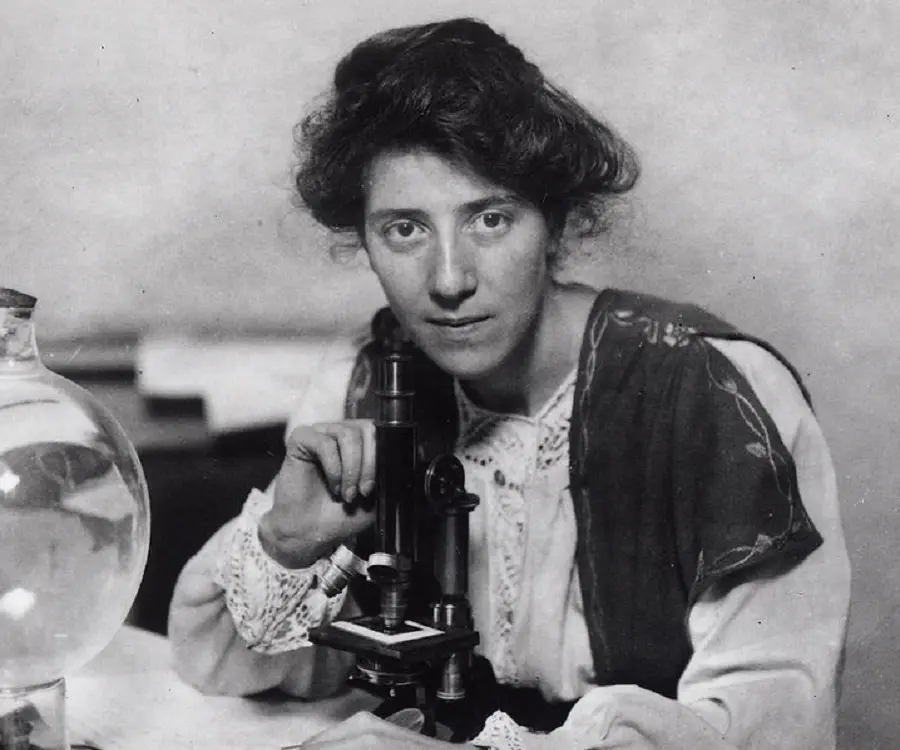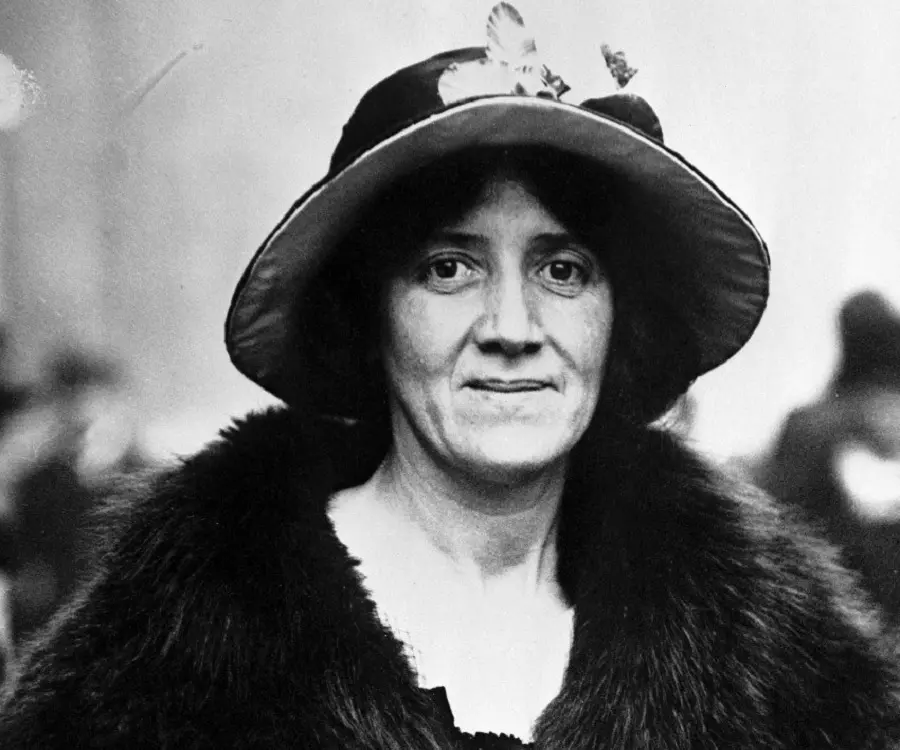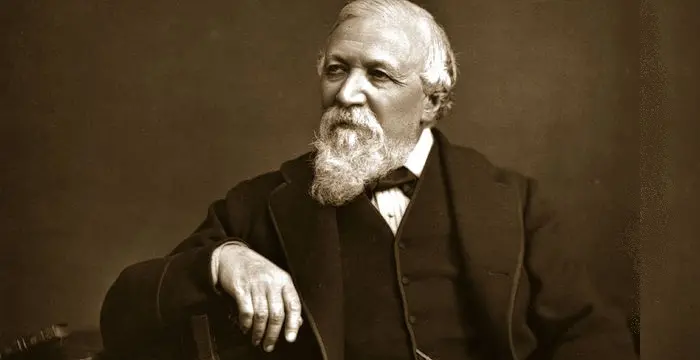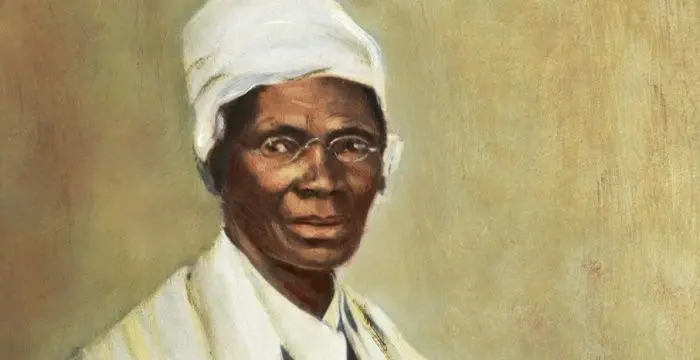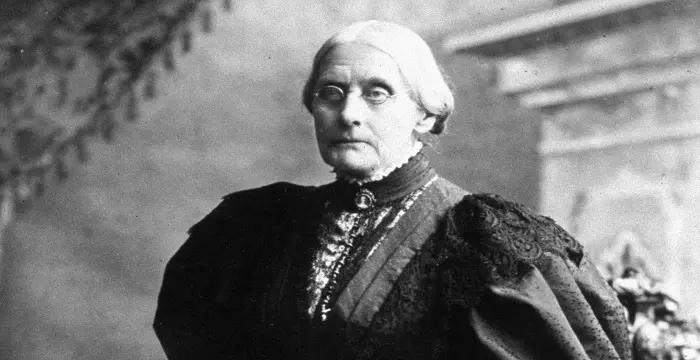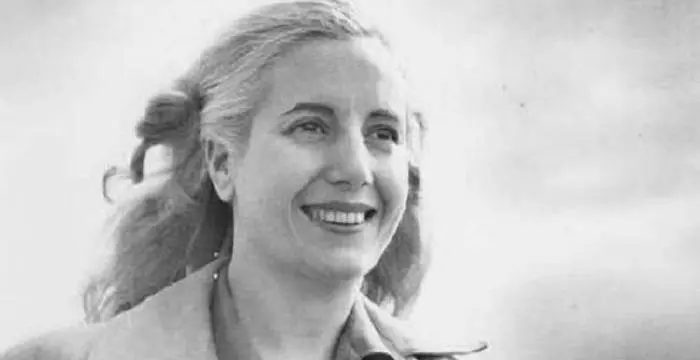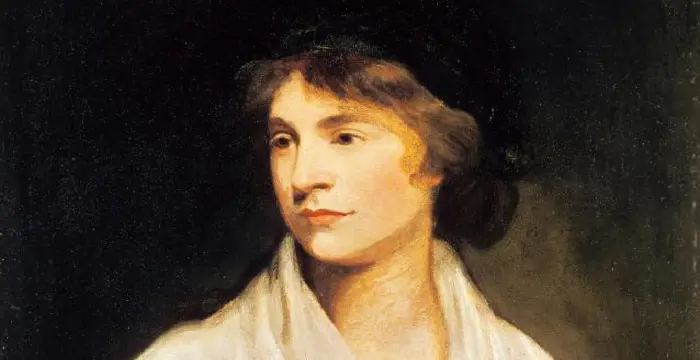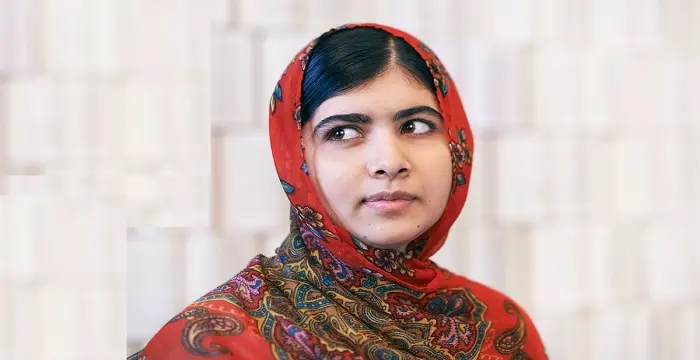
Marie Stopes - Paleobotanist, Birthday and Family
Marie Stopes's Personal Details
Marie Stopes was a British author and palaeobotanist who played a pioneering role in the field of family planning
| Information | Detail |
|---|---|
| Birthday | October 15, 1880 |
| Died on | October 2, 1958 |
| Nationality | British |
| Famous | Feminists, Humanitarian, University College London, Women's Rights Activists, Intellectuals & Academics, Botanists, Writers, Paleobotanist |
| Spouses | Humphrey Verdon Roe, Reginald Ruggles Gates |
| Childrens | Harry Stopes-Roe |
| Universities |
|
| Notable Alumnis |
|
| Birth Place | Edinburgh |
| Gender | Female |
| Father | C |
| Mother | Charlotte Carmichael Stopes |
| Sun Sign | Libra |
| Born in | Edinburgh |
| Famous as | Paleobotanist & Women’s Rights Activists |
| Died at Age | 77 |
Marie Stopes's photo
Who is Marie Stopes?
Marie Stopes was a British author and palaeobotanist who is known for her pioneering work in popularizing the importance of birth control and use of contraceptives in England. She was the foremost advocator of contraception and an influential leader of the early family planning movement. Stopes talked about romantic and sexual happiness in marriage, birth control and contraception at a time when public discussion on sexuality was considered taboo. Her books attracted condemnation from the Church who criticized them for being unabashedly bold and shameless. Nevertheless, this did not dampen the spirit of this social reformer who continued with her campaign for women’s rights. Stopes soon earned a lot of publicity which led her to further write for her cause. It was due to her efforts that social acceptance of books on human sexuality became possible. Interestingly, though Stopes is largely renowned as the advocator of birth control and family planning, she was initially an academician and palaeobotanist before turning into a campaigner. Stopes was the youngest person in Britain to attain a doctorate degree from the University College London and the first female science academician at the University of Manchester. She was truly a great reformer who contributed immensely both as a palaeobotanist and author
// Famous University College London
Pietro Boselli
Pietro Boselli is an Italian model, engineer, teacher, and fitness athlete who became famous as the ‘world’s sexiest math teacher’. Check out this biography to know about his birthday, childhood, family life, achievements and fun facts about him.
David Attenborough
Sir David Attenborough is an English broadcaster and naturalist. This biography offers detailed information about his childhood, life, works, achievements, trivia and timeline.
Robert Browning
Robert Browning was a famous English poet and playwright. Check out this biography to know about his childhood, family life, achievements and other facts about his life.
Childhood & Early Life
Marie Stopes was born on October 15, 1880 to Henry Stopes and Charlotte Carmichael Stopes in Edinburgh. Her father was an engineer and palaeontologist while her mother was a Shakespearean scholar. The family shifted base to London when she was six.
Initially home-schooled, young Stopes attended the St George School for Girls in Edinburgh from 1892 to 1894. Later, she was enrolled at the North London Collegiate School.
Completing her early education, Stopes attended the University College London where she studied botany and geology. In 1902, she graduated with a B.Sc. honors and immediately thereafter, earned a doctorate degree from University College London, thereby becoming the youngest person in Britain to achieve the same.
With an aim to prepare herself for a scientific career, she enrolled at the University of Munich. Stopes attained a Ph.D in palaeobotany in 1904. Concurrently, she served as the Fellow and Lecturer in Palaeobotany at University of Manchester from 1904 to 1907, thus becoming the first female science academician at the University.
Career
Stopes scientific career started on a successful note. She indulged herself in the study of the composition of coal and conducted research on the history of angiosperms.
Her excellence as an academician earned her a grant from the British Royal Society. Based on the same, she travelled to Tokyo in 1907 for a scientific mission. Stopes spent much of her time studying and exploring fossillised plants near Hokkaido coal mine. In 1910, she published her daily findings of these studies and explorations under, ‘Journal from Japan’.
In 1910, she was appointed to determine the age of the Fern Ledges by the Geological Survey of Canada. She moved to North America and indulged herself in studying the geological collections in museums. Meanwhile, in 1911, she married Reginald Ruggles Gates in St Louis, Missouri.
In 1913, she accepted the position of lecturer of paleobotany at the University College. In 1914, her marriage to Gates was annulled due to latter’s impotency.
From 1914, she continued with her research program and wrote several books in her field of speciality. Some of the books published during this time include, ‘The Constitution of Coal’, ‘The Four Visible Ingredients in Banded Bituminous Coal: Studies in the Composition of Coal’ and so on.
While legal proceeding for her divorce was on-going, Stopes turned her attention from scientific work to concentrate on the topic of marriage, love and sex. Influenced by Margaret Sanger’s work on birth control, Stopes started penning a book that was primarily based on the theme of love, marriage and sex.
Stopes finished her book, ‘Married Love’ in 1913. However, she failed to find publisher for the book as people thought it to be brazenly loud and audacious for its unabashed discussion on sexual relationships.
In 1917, Stopes met her future husband Humphrey Roe, a pilot and philanthropist who shared her interest on birth control. In 1918, he published her book, ‘Married Love’. Despite being condemned by the Church, press and medical society, the book was an instant success. It sold more than 2000 copies within a fortnight and by the end of the year was re-printed six times.
The superlative success of ‘Married Love’ put Stopes on a famed list. Her radical views on sexual relationships and equality of men and women in marriage generated much publicity. Women started writing to Stopes seeking her advice on marital issues and contraceptives.
Banking on the wide publicity and fame, Stopes published her second book, ‘Wise Parenthood’ which was a follow-up of ‘Married Love’. Just as the name suggests, the book was a manual on birth control. Through the book, she recommended the use of cervical caps for contraception. She even gave detailed knowledge to her readers on the physical facts of sexuality through her drawings of human anatomy.
In 1919, she came up with a 16-page pamphlet that was aimed primarily for the working class. Titled, ‘A Letter to the Working Mothers’, the pamphlet was a condensed version of her last book ‘Wise Parenthood’
Resigning from her position as a lecturer at the University College, Stopes along with her husband Roe opened a family planning clinic in London in 1920. Named Mother’s Clinic, it was open to all married women and offered free advice on reproductive health and methods of birth control.
In 1921, she founded Society for Constructive Birth Control and Racial Progress, a support organization for the clinic. In 1925, her Mother’s Clinic moved base to Central London where it remains till date. She set up a small network of clinics across Britain. By 1930s, she opened clinics in Leeds, Aberdeen, Belfast, Cardiff and Swansea.
In 1922, a Roman Catholic doctor, Haliday Sutherland wrote a book that attacked Stopes of using poor women for birth control experiments. Denying the charges, she instead sued Sutherland for libel. The trial between Stopes and Sutherland became highly publicized. Though Sutherland was cleared of charges, the trials gained Stopes much publicity.
In 1933, she came up with the book, ‘Roman Catholic Methods of Birth Control’. Through it, she published a formal contradiction of the Church attacks on her works.
By 1930, other family planning organisations had been set up. Together with Stopes, they formed the National Birth Control Council that later turned into Family Planning Association.
Stopes, towards the end of her career, became highly disillusioned with her humanitarian cause and retreated herself to concentrate on literary pursuits. She befriended famous literary figures of that time and inspired by them, took to writing poems and plays. Some of her works of this time include, ‘Love Songs for Young Lovers’, ‘We Burn’ and ‘Joy and Verity’
Major Works
The magnum opus of Stopes career came with her book, ‘Married Love’, a sex manual that dealt with the subject of birth control. Through the book, she professed the use of birth control measures and the importance of family planning. The book contained her radical views on sexual relationships and equality of men and women in marriage. Despite being condemned by the Church, it was highly popular and sold more than 2000 copies within a fortnight. Its outstanding success led Stopes to pen her future books, ‘Wise Parenthood’, ‘A Letter to Working Mothers’, ‘Radiant Motherhood’ and so on.
Personal Life & Legacy
Stopes was briefly involved in a romantic relationship with Japanese botanist, Kenjiro Fujii, whom she met at the University of Manchester in 1904.
She married Canadian geneticists, Reginald Ruggles Gates in 1911. Stope refusal to leave her maiden name and Gates impotency led to brawls between the two which eventually ended in divorce.
Following her divorce to Gates, Stopes married Humphrey Roe in 1918. The couple was blessed with a son in 1924. Prior to this, Stopes delivered a stillborn baby in 1919 which started her lifelong distrust against doctors. In 1938, she separated from Humphrey.
In 1923, she shifted to Old Higher Lighthouse on the Isle of Portland, Dorset. Therein, she founded the Portland Museum which opened in 1930.
Towards the end of her life, Stopes suffered from bad health. However, due to her distrust of doctors, she refused any medical intervention. It was only when she reached the advanced stage of breast cancer that her ailment was diagnosed. Even thereafter, she refused standard treatment and instead opted for holistic therapy.
Stopes breathed her last on October 2, 1958, at her home in Dorking, Surrey. According to her will, she left her clinic to the Eugenics Society. Most of her estate went to the Royal Society of Literature.
Posthumously, an English Heritage blue plaque was erected in Upper Norwood, where she lived from 1880 to 1892, in her commemoration.
// Famous Writers
Joyce Meyer
Joyce Meyer is a Christian author and speaker. This biography provides detailed information about her childhood, life, achievements, works & timeline
Temple Grandin
Temple Grandin is a well-known American writer, autistic activist and animal expert. This biography profiles her childhood, life, achievements, career and timeline
Tennessee Williams
Tennessee Williams was one of the greatest playwrights of the 20th century. This biography of Tennessee Williams provides detailed information about his childhood, life, achievements, works and timeline.
Marie Stopes biography timelines
- // 1880 To 1892Posthumously, an English Heritage blue plaque was erected in Upper Norwood, where she lived from 1880 to 1892, in her commemoration.
- // 15th Oct 1880Marie Stopes was born on October 15, 1880 to Henry Stopes and Charlotte Carmichael Stopes in Edinburgh. Her father was an engineer and palaeontologist while her mother was a Shakespearean scholar. The family shifted base to London when she was six.
- // 1892 To 1894Initially home-schooled, young Stopes attended the St George School for Girls in Edinburgh from 1892 to 1894. Later, she was enrolled at the North London Collegiate School.
- // 1902Completing her early education, Stopes attended the University College London where she studied botany and geology. In 1902, she graduated with a B.Sc. honors and immediately thereafter, earned a doctorate degree from University College London, thereby becoming the youngest person in Britain to achieve the same.
- // 1904With an aim to prepare herself for a scientific career, she enrolled at the University of Munich. Stopes attained a Ph.D in palaeobotany in 1904. Concurrently, she served as the Fellow and Lecturer in Palaeobotany at University of Manchester from 1904 to 1907, thus becoming the first female science academician at the University.
- // 1904Stopes was briefly involved in a romantic relationship with Japanese botanist, Kenjiro Fujii, whom she met at the University of Manchester in 1904.
- // 1907 To 1910Her excellence as an academician earned her a grant from the British Royal Society. Based on the same, she travelled to Tokyo in 1907 for a scientific mission. Stopes spent much of her time studying and exploring fossillised plants near Hokkaido coal mine. In 1910, she published her daily findings of these studies and explorations under, ‘Journal from Japan’.
- // 1910 To 1911In 1910, she was appointed to determine the age of the Fern Ledges by the Geological Survey of Canada. She moved to North America and indulged herself in studying the geological collections in museums. Meanwhile, in 1911, she married Reginald Ruggles Gates in St Louis, Missouri.
- // 1911She married Canadian geneticists, Reginald Ruggles Gates in 1911. Stope refusal to leave her maiden name and Gates impotency led to brawls between the two which eventually ended in divorce.
- // 1913 To 1914In 1913, she accepted the position of lecturer of paleobotany at the University College. In 1914, her marriage to Gates was annulled due to latter’s impotency.
- // 1913Stopes finished her book, ‘Married Love’ in 1913. However, she failed to find publisher for the book as people thought it to be brazenly loud and audacious for its unabashed discussion on sexual relationships.
- // 1914From 1914, she continued with her research program and wrote several books in her field of speciality. Some of the books published during this time include, ‘The Constitution of Coal’, ‘The Four Visible Ingredients in Banded Bituminous Coal: Studies in the Composition of Coal’ and so on.
- // 1918In 1917, Stopes met her future husband Humphrey Roe, a pilot and philanthropist who shared her interest on birth control. In 1918, he published her book, ‘Married Love’. Despite being condemned by the Church, press and medical society, the book was an instant success. It sold more than 2000 copies within a fortnight and by the end of the year was re-printed six times.
- // 1918Following her divorce to Gates, Stopes married Humphrey Roe in 1918. The couple was blessed with a son in 1924. Prior to this, Stopes delivered a stillborn baby in 1919 which started her lifelong distrust against doctors. In 1938, she separated from Humphrey.
- // 1919In 1919, she came up with a 16-page pamphlet that was aimed primarily for the working class. Titled, ‘A Letter to the Working Mothers’, the pamphlet was a condensed version of her last book ‘Wise Parenthood’
- // 1920Resigning from her position as a lecturer at the University College, Stopes along with her husband Roe opened a family planning clinic in London in 1920. Named Mother’s Clinic, it was open to all married women and offered free advice on reproductive health and methods of birth control.
- // 1921 To 1925In 1921, she founded Society for Constructive Birth Control and Racial Progress, a support organization for the clinic. In 1925, her Mother’s Clinic moved base to Central London where it remains till date. She set up a small network of clinics across Britain. By 1930s, she opened clinics in Leeds, Aberdeen, Belfast, Cardiff and Swansea.
- // 1922In 1922, a Roman Catholic doctor, Haliday Sutherland wrote a book that attacked Stopes of using poor women for birth control experiments. Denying the charges, she instead sued Sutherland for libel. The trial between Stopes and Sutherland became highly publicized. Though Sutherland was cleared of charges, the trials gained Stopes much publicity.
- // 1923 To 1930In 1923, she shifted to Old Higher Lighthouse on the Isle of Portland, Dorset. Therein, she founded the Portland Museum which opened in 1930.
- // 1930By 1930, other family planning organisations had been set up. Together with Stopes, they formed the National Birth Control Council that later turned into Family Planning Association.
- // 1933In 1933, she came up with the book, ‘Roman Catholic Methods of Birth Control’. Through it, she published a formal contradiction of the Church attacks on her works.
- // 2nd Oct 1958Stopes breathed her last on October 2, 1958, at her home in Dorking, Surrey. According to her will, she left her clinic to the Eugenics Society. Most of her estate went to the Royal Society of Literature.
// Famous Women's Rights Activists
Emily Greene Balch
Emily Greene Balch was an American economist, sociologist and pacifist who won the 1946 Nobel Peace Prize. This biography of Emily Greene Balch provides detailed information about her childhood, life, achievements, works & timeline.
Sojourner Truth
Sojourner truth was an African American abolitionist who was the first black woman to win a case against a white man. This biography provides detailed information about her childhood, life, achievements, works & timeline.
Susan B. Anthony
Susan B. Anthony was an American feminist who played a major role in the women's suffrage movement. This biography of Susan B. Anthony provides detailed information about her childhood, life, achievements, works & timeline
Evita Peron
Radio actress Evita Peron was the second wife of President Juan Peron of Argentina. This biography of Evita Peron provides detailed information about her childhood, life, works, achieements & timeline.
Mary Wollstonecraft
Mary Wollstonecraft was a British writer, philosopher and an advocate of women’s rights. This biography provides detailed information about her childhood, life, works, achievements & timeline.
Malala Yousafzai
Malala Yousafzai is a Pakistani women’s rights activist and the youngest-ever Nobel laureate. This biography of Malala Yousafzai provides detailed information about her childhood, life, achievements, works & timeline.
Marie Stopes's FAQ
What is Marie Stopes birthday?
Marie Stopes was born at 1880-10-15
When was Marie Stopes died?
Marie Stopes was died at 1958-10-02
Where was Marie Stopes died?
Marie Stopes was died in Dorking
Which age was Marie Stopes died?
Marie Stopes was died at age 77
Where is Marie Stopes's birth place?
Marie Stopes was born in Edinburgh
What is Marie Stopes nationalities?
Marie Stopes's nationalities is British
Who is Marie Stopes spouses?
Marie Stopes's spouses is Humphrey Verdon Roe, Reginald Ruggles Gates
Who is Marie Stopes childrens?
Marie Stopes's childrens is Harry Stopes-Roe
What was Marie Stopes universities?
Marie Stopes studied at University College London, University College London, Ludwig Maximilian University of Munich
What was Marie Stopes notable alumnis?
Marie Stopes's notable alumnis is University College London
Who is Marie Stopes's father?
Marie Stopes's father is C
Who is Marie Stopes's mother?
Marie Stopes's mother is Charlotte Carmichael Stopes
What is Marie Stopes's sun sign?
Marie Stopes is Libra
How famous is Marie Stopes?
Marie Stopes is famouse as Paleobotanist & Women’s Rights Activists
